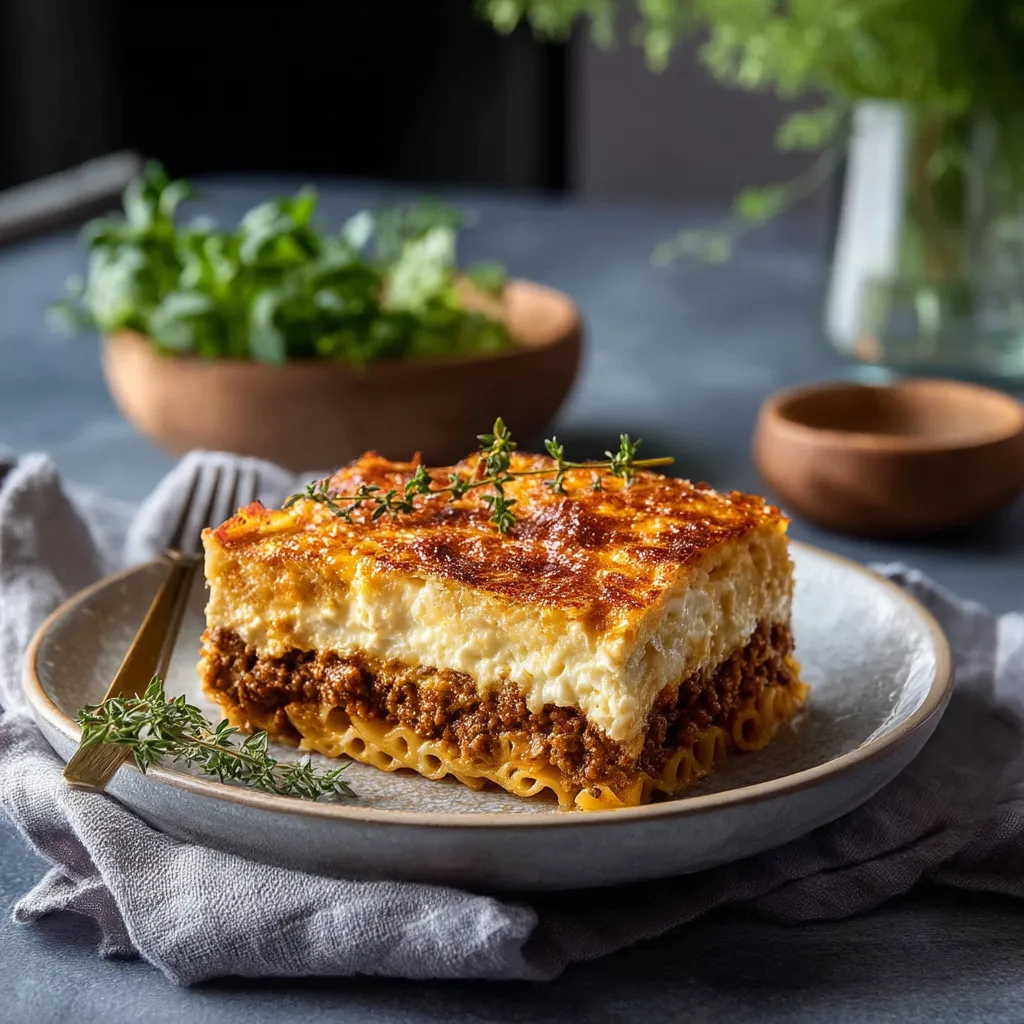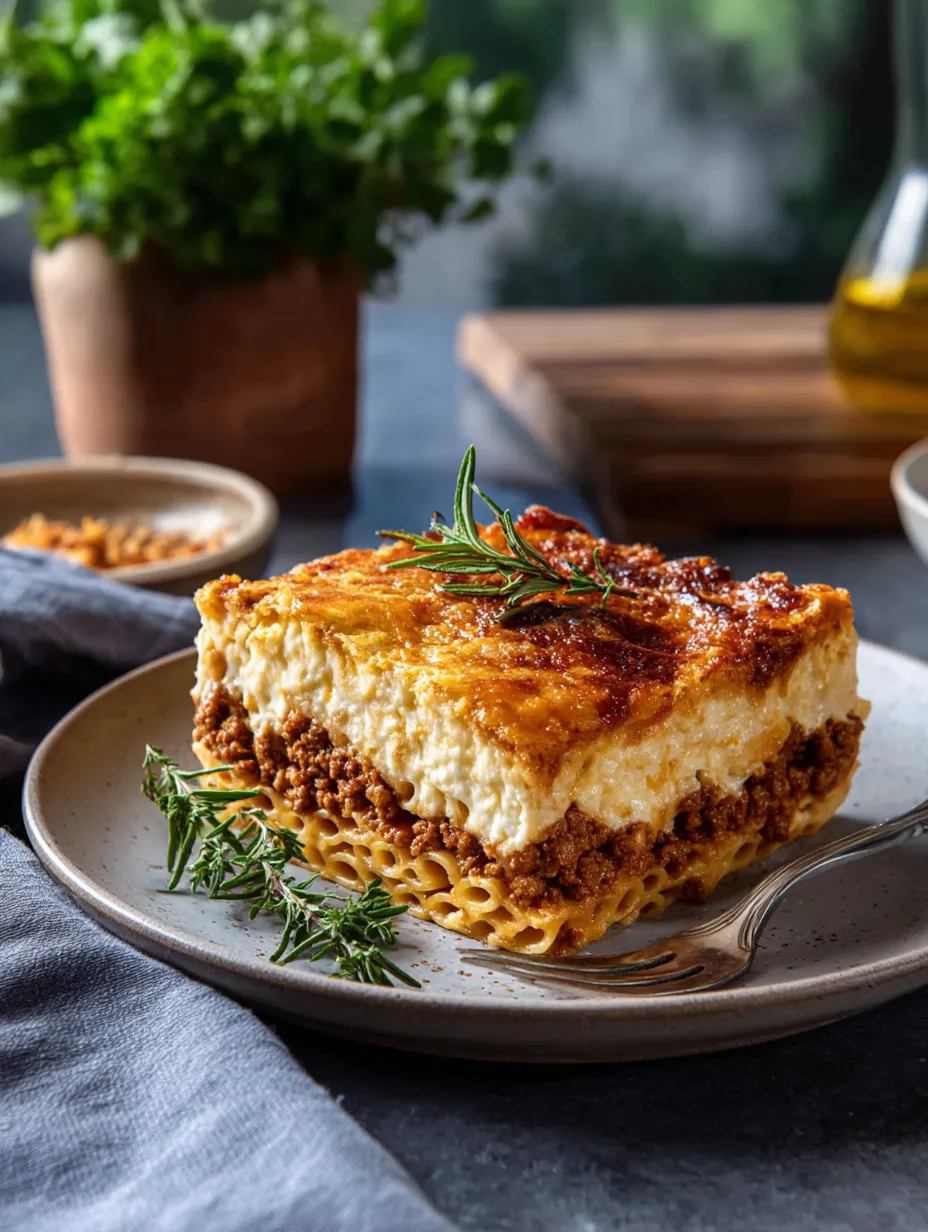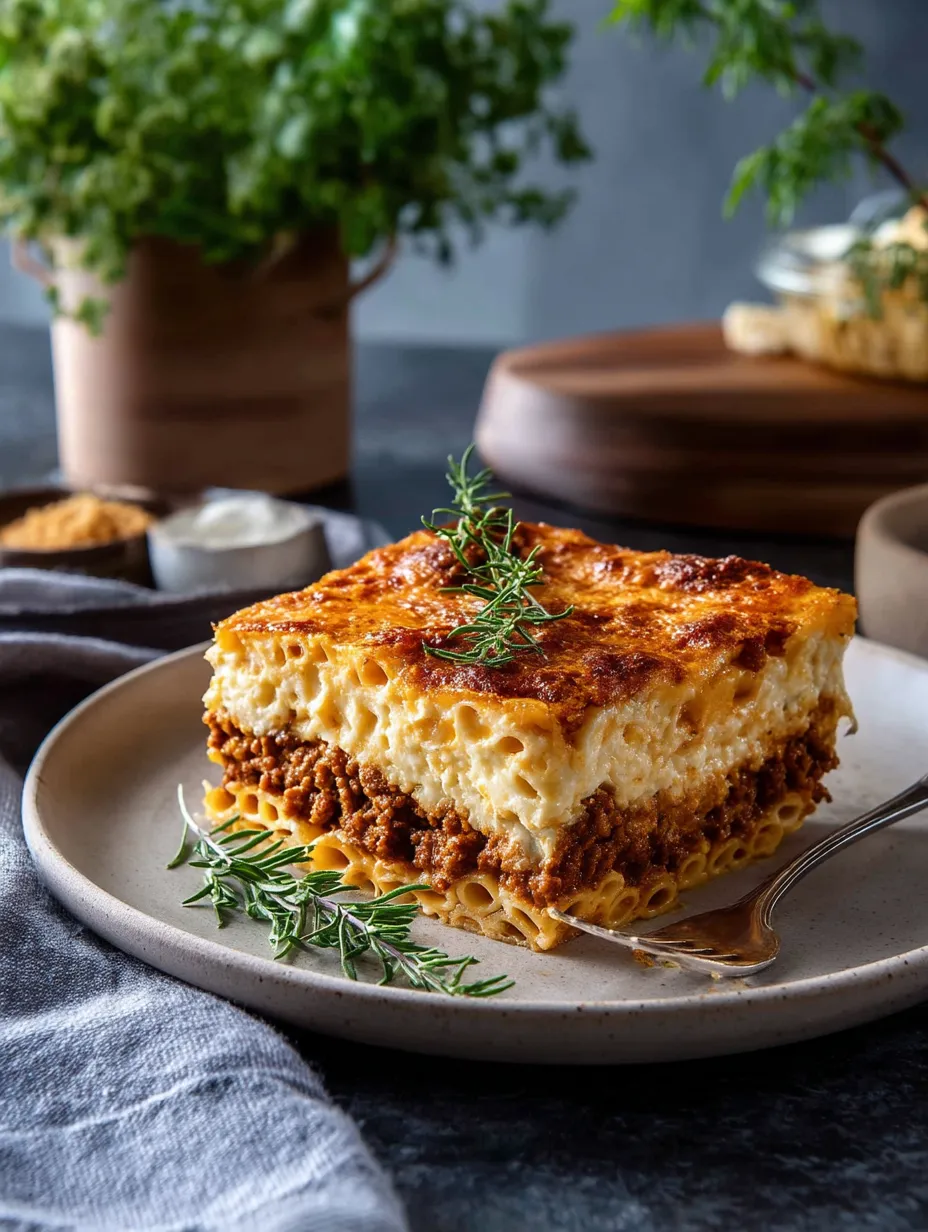 Pin it
Pin it
Turn everyday items into a delicious Greek pasta bake with this pastitsio. It brings all those amazing Mediterranean tastes straight to your table. When you put together the seasoned noodles, spiced meat filling, and smooth béchamel topping, you get something that's both fancy and totally satisfying.
The first time I whipped up this pastitsio was for a family dinner when I wanted something different than the usual lasagna. My Greek neighbor caught a whiff through my kitchen window and hurried over, saying it smelled just like her Sunday family meals back in Athens.
Ingredients
- Ground beef: Forms the rich foundation for authentic pastitsio. Go for beef with around 15% fat for the tastiest results.
- Pastitsio pasta No2: These special tubes have a hollow middle that soaks up all the sauce. You need this shape for the real deal texture.
- Cinnamon and cloves: They might sound weird in a pasta dish but trust me, they create that special Greek flavor you can't mistake.
- Grated Kefalotiri cheese: Brings that authentic tangy kick. Can't find it? Mix some Parmesan and Romano instead.
- Whole milk: Gets your béchamel perfectly creamy. The fat helps everything stay smooth while it bakes.
- Fresh nutmeg: Grate it right into your béchamel for warmth that the pre-ground stuff just can't touch.
Step-by-Step Instructions
- Brown the Meat:
- Let the ground beef cook on high heat without touching it at first so one side gets really caramelized before breaking it up. This adds tons of flavor to your meat sauce.
- Build the Sauce Base:
- Mix in grated onion and carrot with your softened meat and cook until they turn clear and sweet. Then add your spices so they can bloom in the fat before pouring in the wine and tomatoes.
- Simmer to Perfection:
- Let the sauce bubble away slowly until it thickens and the flavors get super concentrated. It'll take about 25-30 minutes but you'll be glad you waited.
- Cook the Pasta:
- Cook your pastitsio noodles until they're still a bit firm, roughly 3 minutes less than what the box says. This way they won't turn to mush during baking.
- Layer the Components:
- Start with two-thirds of your pasta mixed with cheese on the bottom, then spread all the meat sauce over it, and finish with the rest of the pasta in an even layer on top.
- Prepare Béchamel:
- Cook your flour and oil until they smell nutty, then slowly pour in milk while whisking like crazy. This keeps everything smooth with no lumps.
- Assemble and Bake:
- Pour your béchamel over everything and bake until the top turns golden with some darker spots. Those browned bits are where all the good flavor hides.
 Pin it
Pin it
My grandma always grated fresh nutmeg right over her béchamel, saying it was the heart and soul of good pastitsio. I didn't believe her until I tried using the pre-ground stuff once and noticed right away how much of that amazing smell was missing.
Storage and Reheating
This dish stays super tasty in the fridge for up to 4 days. Just wrap leftovers tight with foil or put them in containers that seal well. The flavor actually gets better as all those spices spread throughout the dish.
If you want to freeze it, cut the cooled pastitsio into portions and wrap each piece in plastic, then foil. Tuck them into freezer bags and they'll keep for up to 3 months. Let them thaw in the fridge overnight before warming up.
When you're ready to eat it again, sprinkle some water drops on top, cover with foil, and warm it in a 325°F oven for about 20 minutes. The water trick keeps the pasta from drying out and brings back that creamy texture.
Serving Suggestions
Pastitsio goes perfectly with a basic Greek salad drizzled with good olive oil and lemon juice. The tangy veggies balance out the rich pasta bake just right.
A small side of Greek yogurt mixed with cucumber and mint gives you something cool that works with the warm spices in the meat. It's a classic combo that clears your taste buds between bites.
For a true Greek dinner experience, serve your pastitsio with warm pita bread and some olives on the side. Add a glass of medium-bodied Greek red wine like Agiorgitiko and you've got yourself a real Mediterranean feast.
 Pin it
Pin it
The Cultural Significance
Greek families make pastitsio when it's time to celebrate or get together. You'll find it at Sunday dinners and holiday tables, especially during Easter when everyone comes home.
The word pastitsio comes from Italian pasticcio, which means a jumble or mix-up, though Greeks turned it into something carefully layered. It shows how Italy and Greece swapped cooking ideas over time, with each putting their own spin on things.
Different parts of Greece make it slightly differently, but you'll always find tube pasta, spiced meat sauce, and that amazing creamy béchamel on top. These three layers are what Greek comfort food is all about, and families have been making it this way forever.
Frequently Asked Questions
- → Which type of pasta suits this dish?
Specialty pastitsio pasta with a hollow center is the traditional pick. Penne or bucatini work well as substitutes too.
- → Can I prep the meat sauce early?
Sure thing! Cook the sauce the day before, pop it in the fridge, and save time for assembling later.
- → How can I avoid clumps in my béchamel?
To keep the béchamel smooth, whisk non-stop while slowly pouring the milk into the flour-and-oil mixture.
- → What’s the best cheese for this?
If you’re after authenticity, try kefalotyri and Parmigiano Reggiano. Parmesan works well as a simpler option too.
- → Can I switch the ground beef for something else?
For sure! Ground lamb or pork can bring a richer taste. Beef is just the classic go-to.
